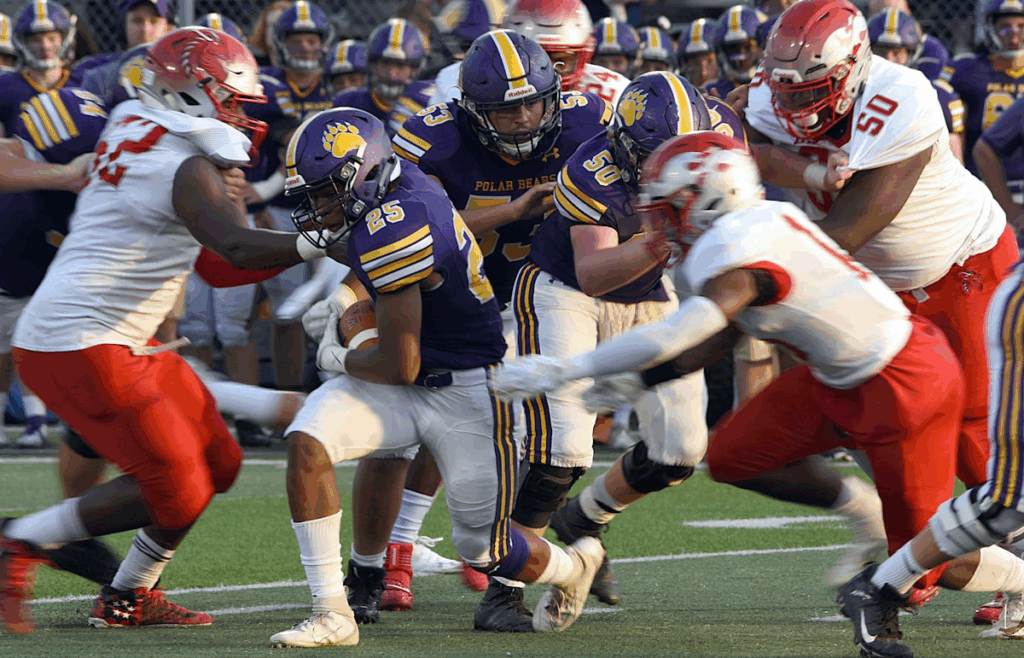It’s a common sight in high schools across the country: an athlete posting huge squat and deadlift numbers yet pulling a muscle or blowing an ACL on a routine field cut. How does that happen? The answer usually comes down to positional weakness: being powerful in some positions but alarmingly unstable in others.
The worst part is, good athletes are great at masking these weaknesses on the field…right up until they get hurt. That makes it hard to assess their overall stability on the field.
Coaches and parents often praise a “big, strong kid,” but that label can mask poor movement quality. Athletes who rely on brute force without control develop blind spots at specific joint angles or planes of motion.
Those blind spots are where most noncontact injuries occur.
Consider an athlete who excels at the “big basics.” I very often see a kid with monster bilateral lifts who can’t balance on one leg or decelerate laterally without caving their structure. Fast forward to a game and they plant awkwardly, their body position unsupported, and suddenly it’s an ankle rolling or a ligament giving out.

That impressive barbell total offers no protection because the body position is unfamiliar and unsupported.
Strength alone isn’t enough. It’s important, sure. Absolutely necessary. But not enough.
Injury resilience and high performance comes from controlling that strength in every position and plane. That means looking past the “big lifts”—squats, deadlifts, presses—and filling in the gaps: unilateral stability, anti-rotation core work, and movements outside the sagittal plane.
Filling the Gaps
Sport coaches juggle dozens of athletes and a packed practice schedule; they rarely have the bandwidth to individualize corrective work. That’s where a dedicated performance coach adds tremendous value, far beyond any Crossfit box or bodybuilding routine.
If you’re a sport coach and you recognize these red flags, partner with a qualified performance coach. Their expertise in functional anatomy and targeted training is the difference between chronic injury patterns and athletes who thrive. They can dramatically reduce injury rates and boost performance.
Pay close attention to recurring injury patterns. For example, chronic hamstring strains often point to adductor overuse or hamstring weakness at end‑range hip flexion. The fix is eccentric hamstring work at long length. Persistent calf or Achilles issues can suggest limited foot/ankle mobility and missing strength in dorsiflexion. Address these with loaded calf eccentrics, foot strength drills, and mobility work for the ankle.
There’s no one-size-fits-all of course, that’s why it’s important to assess athletes. When you systematically shore up positional deficits, you not only cut down noncontact injuries but also unlock performance gains.
An athlete who once hesitated to drop into a defensive stance with groin complaints will move laterally with confidence after strengthening hip abductors and adductors through full range. You’re building armor for your athlete. Over time, those “armor plates” of positional strength make athletes more robust and adaptable, able to express power from any stance or angle.
No one can eliminate all injuries, but reducing those preventable blind spots elevates both safety and performance. Focus your training on the positions where athletes are most vulnerable and transform those weaknesses into strengths. Over time, you’ll notice fewer non-contact injuries and more robust, adaptable athletes who can express their strength from any stance or angle.”
After all, athletes can’t be on a highlight reel if they’re sitting injured on the bench.

